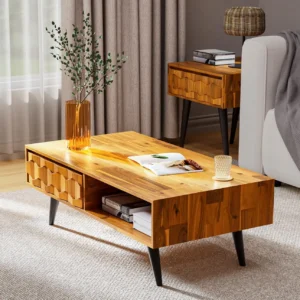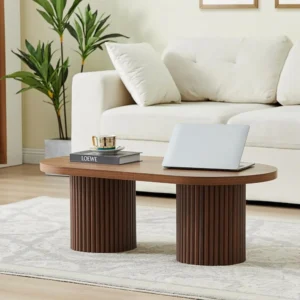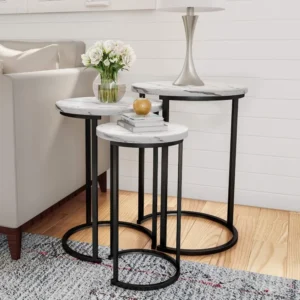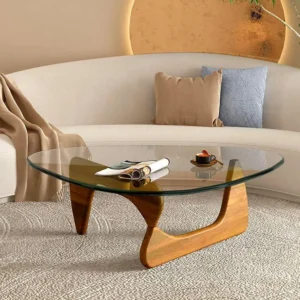Introduction: Understanding the Timeless Appeal of Older Tables
There’s something undeniably captivating about older tables. Each weathered surface and worn edge tells a story—of family gatherings, creative work, and the passing of time. When a beautifully crafted table enters a room, it brings with it not just functionality but character and history that modern pieces often lack.
Yet for many enthusiasts and collectors, confusion persists about what truly constitutes an “antique” versus a “vintage” table. These terms are frequently used interchangeably in casual conversation, but in the furniture world, they represent distinct categories with significant differences in age, craftsmanship, and value.
Understanding these distinctions matters for several important reasons:
- It affects the monetary value and investment potential of your furniture
- It informs proper care and restoration approaches
- It helps create more authentic and cohesive interior design
- It prevents misrepresentation when buying or selling pieces
At Hearth Forms, our expertise in curated mid-century modern furniture has given us deep appreciation for the subtle indicators that distinguish truly special tables. Our focus on authentic design principles allows us to recognize the craftsmanship markers that separate different furniture eras.
This comprehensive guide will help you confidently distinguish between antique and vintage tables through clear definitions, detailed identification methods, and expert insights into the unique characteristics of each category. Whether you’re a collector, decorator, or simply someone who appreciates intelligent black mid-century coffee tables and other quality furnishings, you’ll gain valuable knowledge to make informed decisions about these timeless pieces.
Antique vs Vintage Tables at a Glance: The Essential Differences
The fundamental distinction between antique and vintage tables lies primarily in their age, though several other important factors differentiate these categories:
| Characteristic | Antique Tables | Vintage Tables |
|---|---|---|
| Age | 100+ years old | 20-99 years old (definitions vary) |
| Era | Pre-1920s | Generally 1920s-early 2000s |
| Construction | Primarily handcrafted | Mix of handcrafting and early mass production |
| Materials | Traditional woods (mahogany, walnut, oak) | Traditional and newer materials (teak, plywood, formica) |
| Joinery | Hand-cut dovetails, mortise and tenon | Machine-cut joints, some early industrial techniques |
| Design Periods | Victorian, Georgian, Regency, Empire | Art Deco, Mid-Century Modern, Atomic Age |
| Hardware | Hand-forged or early machine-made | Standardized, often manufacturer-specific |
| Value Drivers | Rarity, provenance, historical significance | Designer attribution, cultural significance, condition |
The 100-year threshold for antiques represents a long-established standard in the antiques industry and even has legal implications in some countries for import/export purposes. However, the definition of vintage is somewhat more fluid, with some experts using ranges like 30-100 years or 40-99 years.
Beyond age alone, these two categories bring distinctly different aesthetic qualities to interior spaces. Antique tables often add a sense of formality, history and heritage, while vintage pieces—particularly those from the mid-century era—contribute a sense of nostalgic modernity that pairs beautifully with contemporary design. Many enthusiasts are particularly drawn to mid-century modern vintage coffee tables for their timeless appeal that transcends trends.
Understanding the differences between mid-century vs mid-century modern furniture can further refine your appreciation for these distinct categories and their place in design history.
Understanding Antique Tables: Centuries of Craftsmanship
The 100-year rule that defines antique status isn’t arbitrary—it represents a significant threshold where furniture has survived long enough to demonstrate both historical importance and exceptional durability. Most antique tables available today were created before the widespread industrialization of furniture making, representing an era when craftsmanship was more personal and methodical.
Distinctive Characteristics of Antique Tables
Antique tables showcase several defining features that reflect their pre-industrial origins:
Handmade Construction: Look for slight irregularities in dimensions and details that indicate hand-crafting rather than machine precision. These “imperfections” are actually marks of authentic craftsmanship.
Traditional Joinery: Techniques like hand-cut dovetails (with slightly irregular spacing), mortise and tenon joints, and wooden pegs rather than screws demonstrate period-appropriate construction.
Old-Growth Woods: Antique tables often feature denser, tighter wood grain patterns from old-growth forests that no longer exist. Common woods include:
- Mahogany (rich reddish-brown, often with subtle rippling patterns)
- Walnut (dark chocolate brown with distinctive grain)
- Oak (prominent grain with excellent durability)
Rosewood (dark with distinctive figuring)
Signs of Period-Specific Tools: Surface marks from hand planes, slight irregularities in saw cuts, and other tool signatures that match historical woodworking methods.
Historical Design Periods
Antique tables reflect distinct design movements spanning centuries:
- Georgian (1714-1830): Characterized by elegant proportions, cabriole legs, and restrained ornamentation
- Victorian (1837-1901): Often more ornate with carved details, heavier proportions, and darker finishes
- Arts & Crafts (late 19th-early 20th century): Simpler designs emphasizing visible craftsmanship and structural honesty
The Concept of Patina
One of the most valued aspects of antique tables is their patina—the rich surface character that develops only through genuine age and use. True patina includes:
- A mellowed finish with subtle color changes from oxidation
- A soft luster that differs from modern glossy finishes
- Wear patterns consistent with authentic use over decades
- Surface character that tells the furniture’s history
This quality cannot be authentically reproduced and represents part of why revealing quality craftsmanship in vintage furniture is so important for collectors who appreciate the difference between genuine age and artificial distressing.
Understanding Vintage Tables: Mid-Century Charm and Beyond
Vintage tables occupy a unique position in furniture history—created during an era when traditional craftsmanship began merging with modern production methods. Typically considered to be between 20 and 99 years old, vintage pieces capture pivotal moments in design evolution throughout the 20th century.
The Vintage Age Range
The definition of “vintage” has some fluidity compared to the strict 100-year rule for antiques. Most experts agree that vintage furniture falls within these parameters:
* No less than 20 years old (distinguishing it from simply “used” furniture)
* Less than 100 years old (before it crosses into antique territory)
* Often most valuable from iconic design periods of the 20th century
Characteristics of Vintage Tables
Vintage tables demonstrate distinctive qualities that reflect their mid-20th century origins:
Evolving Production Methods: Many vintage pieces show a fascinating hybrid of handcrafting and early machine production—representing a transitional period in furniture making.
Innovative Materials: The 20th century introduced new materials and applications:
- Plywood and bent wood technologies
- Formica and other laminates
- Metal legs and structural elements
Early plastics and composite materials
Iconic Design Movements: Vintage tables often reflect well-defined design philosophies:
- Art Deco (1920s-30s): Bold geometric forms and luxurious materials
- Mid-Century Modern (1940s-70s): Clean lines, organic shapes, and functional minimalism
- Space Age/Atomic (1950s-60s): Futuristic forms inspired by space exploration
Postmodern (1970s-80s): Experimental forms challenging traditional design principles
Designer Attribution: Many vintage pieces, particularly from mid-century periods, can be traced to specific influential designers like Eames, Noguchi, Saarinen, and Nelson, whose tables remain highly collectible.
The growing appreciation for vintage design has made these pieces increasingly desirable, with enthusiasts seeking authentic materials in vintage tables to capture the distinctive aesthetic of these pivotal design eras.

Many collectors particularly value mid-century modern walnut coffee tables for their warm tones and characteristic grain patterns that exemplify the organic modernism of the era. Learning to recognize identifying design eras in vintage tables helps enthusiasts appreciate these pieces in their proper historical context.
How to Identify an Antique Table: Expert Authentication Methods
Determining whether a table truly qualifies as antique requires methodical examination of several key indicators. These authentication approaches help distinguish genuine antiques from later reproductions or vintage pieces.
Examine Construction Methods
The way a table was built reveals much about its age:
Joinery Techniques: Look for hand-cut dovetails with slightly irregular spacing and dimensions. Machine-cut dovetails (perfectly uniform) didn’t appear until the late 19th century.
Wood Joinery Pegs: Many antique tables used wooden pegs rather than screws or nails. Check if dowels are hand-whittled (slightly irregular) rather than machine-perfect.
Irregular Saw Marks: Hand-sawn lumber shows uneven saw marks, while circular saw marks (perfectly consistent circles or arcs) indicate post-1830s construction.
Single Wood Plank Surfaces: Many antique tabletops used wide single boards rather than narrow glued panels, reflecting the availability of old-growth timber.
Identify Period-Appropriate Woods and Cuts
Wood selection and cutting methods changed over time:
Quarter-Sawn Lumber: Popular in earlier periods, showing distinctive ray fleck patterns, especially in oak.
Secondary Woods: Check less visible areas (drawer bottoms, backing boards) for period-appropriate secondary woods like poplar or pine.
Old-Growth Characteristics: Tighter growth rings and more stable dimensional properties than newer lumber.
Assess Hardware Elements
Hardware provides reliable dating clues:
Hand-Forged Nails: Irregular heads and tapering shanks indicate pre-1800s construction.
Square-Head Nails: Common from the late 18th century through mid-19th century.
Rose-Head Screws: Handmade with off-center slots before standardized machine production.
Brass Hardware Style: Compare against established period examples from reference books or museum collections.
Evaluate Authentic Aging Signs
Distinguish genuine age from artificial distressing:
Consistent Wear Patterns: Authentic wear appears in logical places where hands would touch or feet would rub.
Bottom Surface Aging: Check the underside for consistent age indicators—these areas rarely get artificially distressed.
Oxidation and Color Change: Natural aging creates subtle surface coloration that’s difficult to falsify.
The presence of construction details appropriate to specific historical periods helps authenticate genuine antique pieces. For comparison, examining mid-century modern solid wood coffee tables reveals how construction methods evolved in later periods while still maintaining quality craftsmanship.
How to Identify a Vintage Table: Key Recognition Features
Identifying authentic vintage tables requires understanding the distinctive manufacturing techniques and design elements that emerged during the 20th century. These indicators help distinguish genuine vintage pieces from both antiques and modern reproductions.
Manufacturing Techniques
Vintage tables often display a fascinating mix of traditional craftsmanship and industrial production:
Machine-Cut Joinery: Look for perfectly uniform dovetails or finger joints that indicate machine production rather than hand-cutting.
Plywood Construction: Many vintage tables, especially from the mid-century period, incorporated plywood—a 20th-century innovation that allowed for curved forms and greater structural efficiency.
Screws with Standardized Slots: Phillips-head screws weren’t common until the 1930s, so their presence helps date a piece to the vintage era rather than antique.
Factory Stamps and Labels: Many vintage pieces carry manufacturer markings, model numbers, or even original paper labels that can precisely identify their origin.
Material Identification
The 20th century introduced distinctive materials that help authenticate vintage tables:
Specific Wood Species: Teak and walnut dominated mid-century design, while earlier Art Deco pieces might feature exotic veneers.
Formica and Laminates: Colorful surfaces with distinctive patterns were popular from the 1950s-70s.
Metal Components: Chrome-plated or painted steel legs became common in mid-century designs.
Early Synthetic Materials: Vinyl edges, plastic laminates, and fiberglass components signal 20th-century production.
Design Era Indicators
Each decade of the 20th century had distinctive design elements:
Art Deco (1920s-30s): Bold geometric forms, contrasting wood inlays, and stepped profiles.
Mid-Century Modern (1940s-70s): Clean lines, organic shapes, tapered legs, and minimal ornamentation.
Danish Modern (1950s-60s): Warm woods, human-scaled proportions, and elegant simplicity.
Space Age (1960s): White surfaces, plastic components, and futuristic shapes.
1970s Design: Bolder proportions, darker finishes, and more dramatic lines.
Studying key design periods helps in identifying design eras in vintage tables, allowing collectors to pinpoint when a piece was likely created. Many vintage enthusiasts develop expertise in recognizing specific designer hallmarks and manufacturing details that authenticate pieces from particular studios or factories.
Side-by-Side Comparison: Examining Construction Details
The clearest way to understand the differences between antique and vintage tables is through direct comparison of their construction elements. These details reveal not just when a piece was made, but how manufacturing techniques evolved over time.
Joinery Techniques
Antique Tables:
* Hand-cut dovetails with slightly irregular spacing
* Visible saw marks at varying angles
* Mortise and tenon joints with minor irregularities
* Wood pegs or square nails at structural joints
Vintage Tables:
* Machine-cut dovetails with perfect uniformity
* Dowel joints with factory precision
* Some finger joints and corner blocks
* Combination of screws and traditional joinery
Wood Preparation and Cutting
Antique Tables:
* Hand-planed surfaces with subtle tool marks
* Boards of varying widths joined together
* Old-growth timber with tight, even grain patterns
* Often solid wood throughout construction
Vintage Tables:
* Machine-sanded surfaces with uniform smoothness
* Standardized board dimensions
* Veneers over manufactured substrates
* Plywood and particleboard in secondary elements
Hardware Elements
Antique Tables:
* Hand-forged or early machine-made hinges and pulls
* Square-headed nails or hand-cut screws
* Brass or iron hardware that has developed natural patina
* Locks with skeleton keys or other period-appropriate mechanisms
Vintage Tables:
* Standardized hardware often specific to manufacturers
* Phillips-head screws (post-1930s)
* Chrome-plated or brass-finished hardware
* Specialized mid-century hardware designs

Finishing Techniques
Antique Tables:
* Shellac, oil, or wax finishes
* Hand-rubbed applications with subtle variations
* Natural patina development from oxidation and use
* Multiple layers built up over time
Vintage Tables:
* Early synthetic finishes like lacquer or polyurethane
* Spray application for more uniform coverage
* More consistent coloration throughout
* Often thinner finish coats than traditional methods
These construction differences reflect the evolution of furniture making technology. While modern eyes might view machine precision as superior, many collectors value the subtle human variations in antique pieces as evidence of individual craftsmanship. For contemporary spaces, many designers find that styling black mid-century coffee table options can bring distinctive vintage character that complements various interior styles.
Value Considerations: What Makes Antique and Vintage Tables Valuable
The factors that determine value differ somewhat between antique and vintage tables, though both categories share some common value drivers. Understanding these distinctions helps collectors make informed purchasing decisions and recognize investment potential.
Antique Table Value Factors
Age and Rarity: Generally, older and rarer pieces command higher prices, especially those from sought-after historical periods.
Provenance: Documented history of ownership, particularly connections to historical figures or events, can significantly increase value.
Original Condition: While some wear is expected, tables with original finishes and minimal restoration typically fetch higher prices.
Craftsmanship Quality: Superior joinery, exceptional carving, or unusual technical achievements increase desirability.
Maker’s Mark: Pieces from recognized cabinetmakers or workshops often command premium prices.
Vintage Table Value Factors
Designer Attribution: Tables by recognized designers like Eames, Noguchi, or Nakashima can be highly valuable, particularly with documentation.
Manufacturer Reputation: Production pieces from respected companies like Herman Miller, Knoll, or Danish manufacturers like Fritz Hansen carry premium value.
Design Significance: Tables that represent pivotal moments in design history or influential styles tend to appreciate over time.
Material Quality: Solid construction and premium materials generally retain value better than cheaper production pieces.
Current Trend Alignment: Value fluctuates somewhat with design trends, though iconic pieces tend to maintain value regardless.
Restoration Considerations
For antique tables, conservative restoration that preserves original elements generally maintains value better than extensive refinishing. With vintage pieces, careful restoration that respects original materials and finishes is preferred, though period-appropriate refinishing is more accepted than with antiques.
Many collectors find that mid-century modern teak coffee tables represent particularly sound investments due to their enduring design appeal and the increasing scarcity of quality teak furniture from this era. These pieces often appreciate over time when properly maintained.
Styling & Decorating: Incorporating Antique vs. Vintage Tables in Modern Interiors
Integrating older tables into contemporary spaces creates rich, layered interiors with character and history. Antique and vintage tables each bring different qualities to modern rooms, and understanding their unique characteristics helps achieve harmonious design.
Styling with Antique Tables
Antique tables add gravitas and historical depth to modern settings:
Create Intentional Contrast: Pair an ornate antique dining table with modern, streamlined chairs for a striking juxtaposition.
Build Around the Statement Piece: Let an antique library or console table serve as the room’s anchor, with simpler modern elements supporting it.
Connect Through Color: Pull colors from modern art or textiles that echo subtle tones in the wood or details of your antique table.
Balance Visual Weight: Antique pieces often have substantial visual presence—balance this with adequate negative space or lighter modern elements.
Styling with Vintage Tables
Vintage tables, particularly mid-century pieces, often integrate seamlessly with contemporary design:
Embrace Clean Lines: Many vintage tables, especially from the mid-century era, share the clean, uncluttered aesthetic popular in contemporary design.
Layer Time Periods: Pair a vintage coffee table with contemporary seating and lighting for a curated, collected-over-time look.
Connect Through Materials: Echo the warm woods of vintage tables in smaller contemporary accessories for cohesive design.
Play with Scale: Vintage side tables and nesting tables offer flexibility in smaller spaces while adding character.
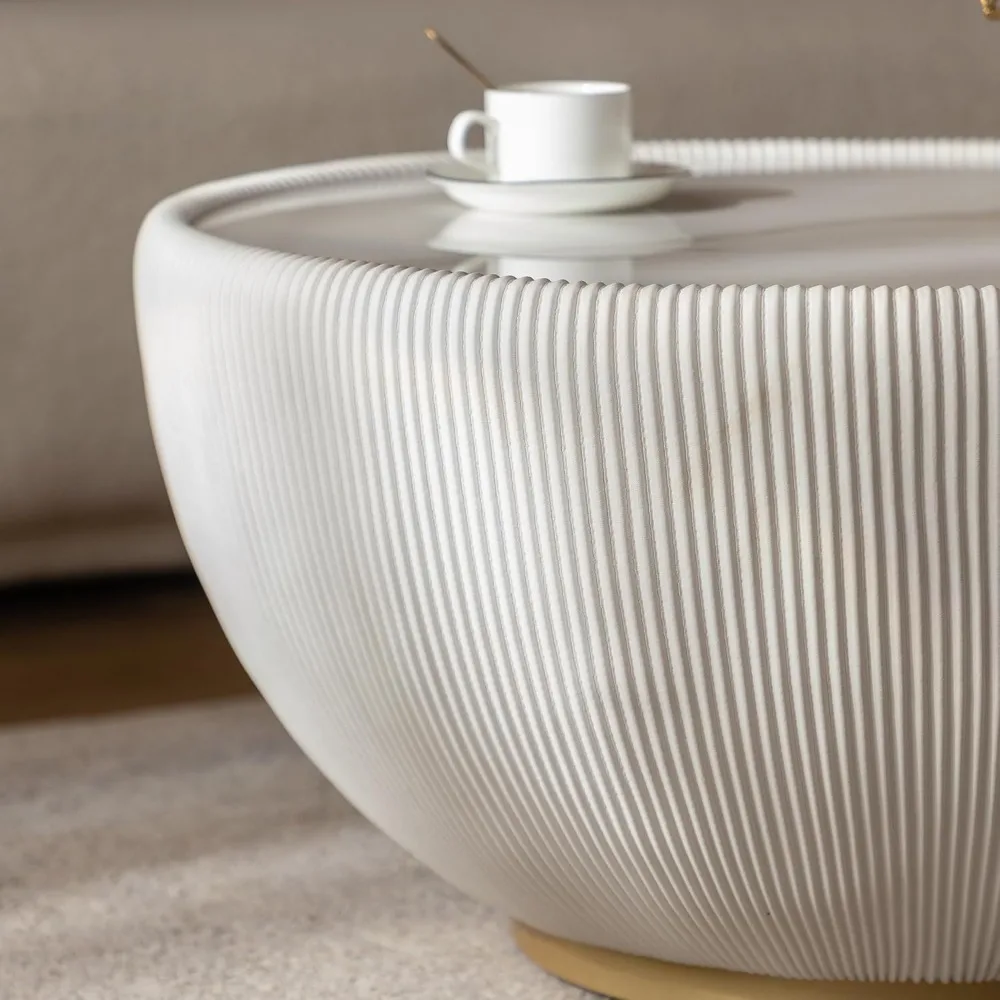
Understanding which styles go well with mid-century modern helps create harmonious spaces that honor vintage pieces without creating a time-capsule effect. For more specific guidance, learning to style a room with a vintage coffee table can transform your space with authentic character.
Understanding Reproductions and “Retro” Tables
In today’s marketplace, reproductions and retro-inspired furniture have become increasingly prevalent alongside genuine antique and vintage pieces. Understanding the differences helps consumers make informed choices aligned with their needs and values.
Defining Reproduction and Retro Furniture
Reproductions: New furniture intentionally designed to mimic specific historical styles or even exact historical pieces. These range from high-quality, hand-crafted recreations to mass-produced approximations.
Retro-Style Furniture: Contemporary pieces that draw inspiration from past design eras without directly copying specific antiques or vintage items. These incorporate modern materials and manufacturing while evoking nostalgic aesthetics.
Identifying Reproductions
Look for these telltale signs:
Too Perfect: Unnaturally uniform distressing or aging that lacks the organic patterns of genuine wear.
Modern Construction Methods: Contemporary fasteners, engineered woods, or assembly techniques inconsistent with the purported period.
Material Inconsistencies: Woods, metals, or finishes that weren’t available during the represented historical period.
Price Discrepancies: Significantly lower pricing than would be expected for genuine antique or vintage pieces of similar style and quality.
When Reproductions Make Sense
Quality reproductions serve valuable purposes in certain situations:
- When specific functional requirements (size, durability) can’t be met by available antique or vintage options
- For high-traffic or commercial environments where preservation concerns would make genuine antiques impractical
- When budget constraints make authentic pieces unattainable
- When specific design matching requires identical pieces that would be impossible to find in vintage quantities
For those seeking distinctive design with authentic heritage, exploring mid-century modern round coffee tables offers genuinely vintage-inspired options that complement contemporary interiors while honoring design history.
Mid-Century Modern End Table Sets of 2, Mid-Century Modern Square Side & End Tables, Mid-Century Modern White Side & End Tables
$348.24 Select options This product has multiple variants. The options may be chosen on the product pageMid-Century Modern Solid Wood Coffee Tables, Mid-Century Modern Teak Coffee Tables
$879.95 Select options This product has multiple variants. The options may be chosen on the product pageMid-Century Modern Danish Coffee Tables, Mid-Century Modern Oval Coffee Tables, Mid-Century Modern Solid Wood Coffee Tables
$390.05 Select options This product has multiple variants. The options may be chosen on the product pageMid-Century Modern Nesting Side & End Tables, Mid-Century Modern Nesting Table Sets, Mid-Century Modern Round Side & End Tables
Price range: $239.35 through $273.06 Select options This product has multiple variants. The options may be chosen on the product pageMid-Century Modern End Table Sets of 2, Mid-Century Modern Walnut Side & End Tables
Price range: $978.89 through $1,957.38 Select options This product has multiple variants. The options may be chosen on the product pageMid-Century Modern Glass Top Coffee Tables, Mid-Century Modern Glass Top Side & End Tables
$460.58 Select options This product has multiple variants. The options may be chosen on the product page
Caring for Your Heritage Piece: Maintenance Differences
Proper maintenance ensures your antique or vintage table remains beautiful and functional for years to come. However, care approaches differ somewhat between these categories due to their different materials and finishes.
Antique Table Care
Gentle Cleaning: Use minimal moisture with mild soap solutions; avoid modern chemical cleaners that can damage traditional finishes.
Waxing vs. Polishing: Apply paste wax 1-2 times yearly rather than silicone-based polishes that can build up and damage surfaces.
Humidity Considerations: Maintain consistent humidity levels (40-60%) to prevent wood shrinkage, expansion, and joint loosening.
Sun Protection: Keep antique tables away from direct sunlight to prevent fading and finish deterioration.
Restoration Approach: Seek conservators who specialize in period-appropriate techniques rather than general refinishers.
Vintage Table Care
Finish-Specific Cleaning: Different vintage finishes require different care—lacquer can handle mild commercial cleaners while oil finishes need specific oil-friendly products.
Material Variety: Clean metal components, laminates, and wood surfaces according to their specific needs rather than with a one-size-fits-all approach.
Preservation vs. Restoration: Minor wear often adds character to vintage pieces—consider conservation rather than complete refinishing.
Hardware Care: Clean and lubricate mechanical elements periodically, especially on tables with extending mechanisms or specialty hardware.
For both categories, preventative measures like using coasters, placemats, and appropriate padding significantly extend furniture life. When specialty care is needed, consulting experts familiar with specific furniture periods ensures appropriate techniques. Owners of black mid-century modern coffee table styles often appreciate guidance on maintaining the distinctive finishes that characterize these pieces.
Which Should You Choose? Matching Your Lifestyle with Antique or Vintage
Selecting between antique and vintage tables depends on several practical considerations beyond just aesthetic preference. Consider these factors when deciding which type best suits your needs:
For Daily Family Use
Would an antique table work well in my busy household?
Antique tables have survived for generations but may require more careful treatment. If you have young children or expect heavy use, a sturdy vintage table (particularly mid-century pieces with durable finishes) might better withstand daily wear.
How concerned should I be about damages?
Vintage tables, especially those from the mid-century era, were designed for everyday family use and often incorporate more durable finishes that resist water rings and minor scratches.
For Space Considerations
Which works better in smaller spaces?
Vintage tables, particularly from the mid-century period, often have more compact, efficient designs ideal for smaller modern homes. Antique tables frequently have larger, more substantial proportions.
What about flexibility?
Consider mid-century modern side end tables for versatility in smaller spaces—these vintage pieces often feature clever designs that maximize functionality while minimizing footprint.
For Investment Potential
Which represents the better long-term value?
High-quality examples from both categories can appreciate, but documented antiques from significant periods typically have more established value trajectories. Vintage pieces by recognized designers continue to show strong appreciation potential.
What about market trends?
The vintage market—particularly for mid-century modern—has shown consistent strength for decades rather than being a passing trend. Certain antique styles experience more pronounced cycles of popularity.
For Design Integration
Which integrates more easily with modern decor?
Vintage tables, with their cleaner lines and more minimal ornamentation, typically blend more seamlessly with contemporary interiors. Antiques create more deliberate contrast.
What about color palette?
Consider how the wood tones in either category complement your existing furnishings. Vintage teak and walnut pieces offer warm, adaptable tones that work in diverse color schemes.
FAQ: Common Questions About Antique and Vintage Tables
Can an item be both antique and vintage?
No—these are mutually exclusive categories based on age. Once a vintage item crosses the 100-year threshold, it becomes an antique. The terms represent distinct time periods rather than style characteristics.
What’s the difference between vintage and retro?
Vintage items are genuinely from an earlier era (20-99 years old), while retro items are new pieces designed to evoke a previous era’s aesthetic. Retro is about style inspiration rather than actual age.
Are antique tables always more valuable than vintage ones?
Not necessarily. While many antiques command premium prices due to age and rarity, high-demand vintage pieces by renowned designers can be equally or more valuable. A mid-century table by Hans Wegner might significantly outvalue a mass-produced Victorian table.
How do I know if my table is worth having appraised?
Consider appraisal if your table has maker’s marks, distinctive design features matching known valuable styles, exceptional craftsmanship, or provenance connecting it to significant makers or owners. Tables with unusual or innovative design features also merit professional assessment.
Should I refinish my antique or vintage table?
For antiques, preservation is generally preferred over refinishing, as original finishes contribute significantly to value. For vintage pieces, light restoration that respects original materials and design intent is acceptable, though collector-grade pieces may be more valuable with original finishes.
How can I tell if wooden elements are veneer or solid wood?
Examine edges and underneath surfaces—veneers show distinct layer lines at edges and typically have different wood species underneath. Check weight too, as solid wood pieces are generally heavier than veneer-covered alternatives.
Where to Find Authentic Antique and Vintage Tables
Finding genuine antique and vintage tables requires knowing where to look and how to evaluate potential purchases:
Specialized Dealers: Established antique shops and vintage furniture dealers typically offer vetted pieces with appropriate provenance, though often at premium prices reflecting their expertise.
Auction Houses: From high-end establishments to local auctions, these venues can yield discoveries, though buyers should understand condition grading and bidding protocols.
Estate Sales: Often present opportunities to find unrestored pieces with original finishes, though competition can be fierce for quality items.
Curated Collections: Retailers like Hearth Forms specialize in authenticated vintage pieces, particularly focusing on mid-century modern design with verified construction and materials.
When purchasing from any source, ask about provenance, examine construction details closely, and research comparable pieces to ensure authenticity and fair pricing. Developing a relationship with reputable dealers who specialize in your area of interest provides valuable guidance and access to premier pieces.



